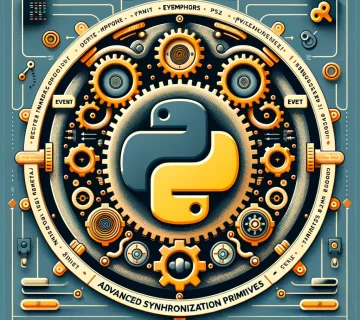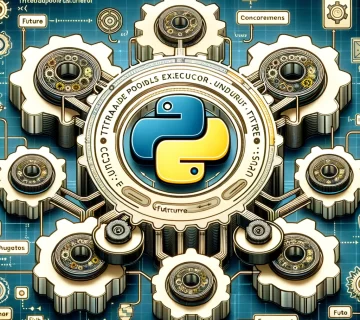Embracing the Zen of Python: A Guiding Light in Programming
When diving into Python, understanding its underlying philosophy offers more than just coding skills; it provides insight into the ‘why’ and ‘how’ of Python’s design. The “Zen of Python,” a collection of aphorisms penned by Tim Peters, succinctly captures this philosophy. Let’s explore these principles that guide Python’s development and usage.
The Birth of Python’s Zen
The Zen of Python, known in the community as PEP 20 (Python Enhancement Proposal 20), is a collection of 19 aphorisms that outline the guiding principles for writing computer programs in Python. While it’s not a strict doctrine, the Zen is a source of wisdom and humor that reflects Python’s nature.
The Principles of the Zen of Python
- Beautiful is better than ugly: Python values aesthetics in code – readability and neatness matter.
- Explicit is better than implicit: Clear and understandable code is paramount in Python programming.
- Simple is better than complex: Python embraces simplicity in design and implementation.
- Complex is better than complicated: While complexity is inevitable, it shouldn’t lead to complication.
- Flat is better than nested: Shallow hierarchies are preferred for readability and simplicity.
- Sparse is better than dense: Readability counts, and having some breathing room in code is beneficial.
- Readability counts: Code should be written as if it’s to be read by others, including future you.
- Special cases aren’t special enough to break the rules: Python emphasizes consistency in design.
- Although practicality beats purity: Pragmatism is valued over ideological purity.
- Errors should never pass silently: Python encourages explicit error handling.
- Unless explicitly silenced: There are times when errors can be intentionally ignored, but it must be a conscious decision.
- In the face of ambiguity, refuse the temptation to guess: Clear and unambiguous code prevents misunderstandings.
- There should be one– and preferably only one –obvious way to do it: Python’s design encourages a single, clear solution.
- Although that way may not be obvious at first unless you’re Dutch: A nod to van Rossum’s Dutch heritage and the notion that the obvious solution may require some Python knowledge.
- Now is better than never: Procrastination isn’t a virtue; better to have something imperfect than nothing.
- Although never is often better than right now: Rushing can lead to poor decisions; careful planning is vital.
- If the implementation is hard to explain, it’s a bad idea: Python code should be understandable.
- If the implementation is easy to explain, it might be a good idea: Clarity and simplicity often correlate with good design.
- Namespaces are one honking great idea — let’s do more of those!: Organized and clear compartmentalization of code is celebrated.
The Impact of the Zen on Python Programming
The Zen of Python is more than guidelines for Python; it’s a philosophy that influences the way Python programmers think and approach problems. It encourages writing code that is not only functional but also clean, readable, and maintainable.
Conclusion and What’s Next
Understanding the Zen of Python is crucial for any Python programmer. It shapes the way Python is written and understood, ensuring that Python code remains intuitive and accessible. In our next post, we will delve into “Installing Python on Different Operating Systems,” guiding you through the practical steps of setting up Python on your machine. Stay tuned to embark on this hands-on journey in Python programming!





No comment